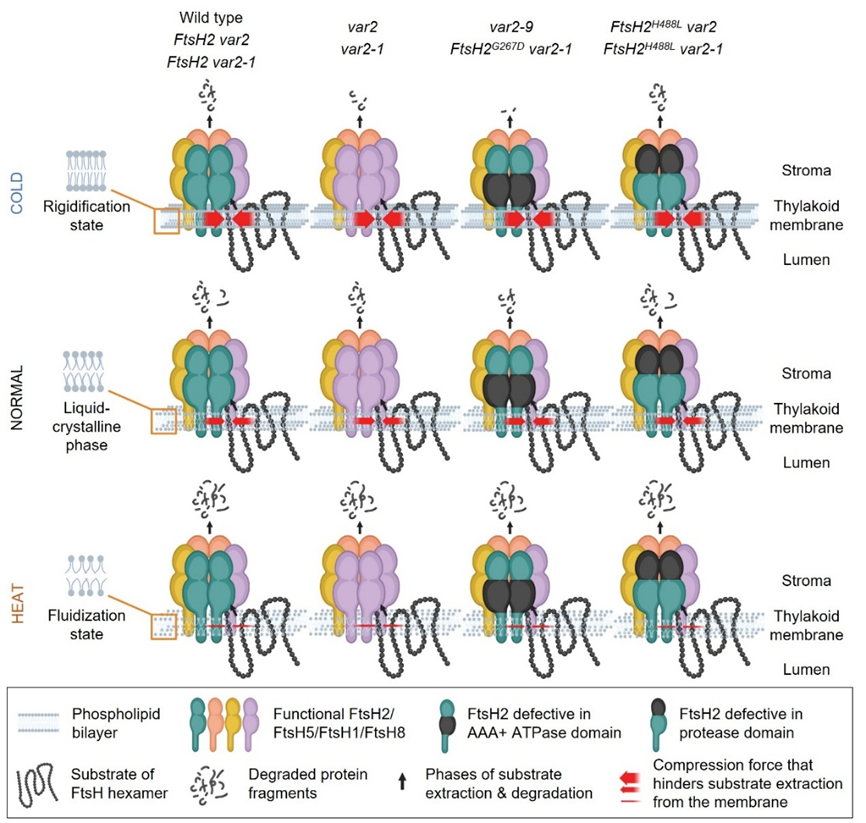We are thrilled to announce the publication of our manuscript " Temperature-driven changes in membrane fluidity differentially impact FILAMENTATION TEMPERATURE-SENSITIVE H2-mediated photosystem II repair" as a Breakthrough Report in The Plant Cell.
Despite its indispensable role in oxygenic photosynthesis, which is essential in supporting life on earth, photosynthesis inevitably produces harmful reactive oxygen species (ROS) as byproducts (Figure 1). ROS damage lipid membranes and membrane-integrated proteins (especially PSII core proteins), compromising photosynthetic activity and plant productivity. Thus, timely repair of damaged PSII proteins is critical to sustaining PSII homeostasis and photosynthesis under fluctuating environmental conditions.

Figure. 1: Production and scavenging of photosynthetic reactive oxygen species (ROS) within chloroplasts. This figure is adapted from Li and Kim (2024), New Phytologist, Tansley Review.
This study addresses a long-standing enigma in plant biology: why is the var2 mutant lacking FtsH2 protease implicated in photosystem II (PSII) repair sensitive to cold but not to heat, even though both conditions generate reactive oxygen species and lead to photodamage in PSII? Our research reveals that membrane fluidity plays a critical role in PSII repair under varying temperatures, highlighting a thermodynamic aspect of this process (Figure 2).
By examining transgenic var2 lines expressing FtsH2 variants defective in either substrate extraction or proteolysis, we discovered that cold stress induces membrane viscosity, which requires enhanced substrate extraction rather than proteolysis by FtsH2 within the hetero-hexameric complex with other FtsH isomers. Consequently, overexpression of an FtsH2 variant lacking substrate extraction activity (FtsH2G267D) fails to rescue the cold-sensitive phenotype. In contrast, an FtsH2 variant lacking protease activity (FtsH2H488L) fully rescues it, suggesting the essential role of FtsH2's AAA-ATPase activity under cold stress when membranes are denser. At higher temperatures, increased membrane fluidity allows AAA-ATPase activity from other FtsH isomers to suffice, explaining the var2 mutant's resilience (similar to wild-type plants) to heat stress (Figure 2).
These findings significantly advance our understanding of PSII repair mechanisms and the influence of membrane rigidity on membrane protein homeostasis. They also open up exciting new avenues for research in chloroplast function and stress adaptation, inspiring further exploration and potential applications in plant biology.
A PhD candidate, Jingzhi Zhang, is the first author of this report, and Professor Chanhong Kim is the corresponding author. This research was funded by the CAS Center for Excellence in Molecular Plant Sciences, the Chinese Academy of Sciences, and the National Natural Science Foundation of China.

Figure 2: Schematic working model presenting how lipid fluidity affects PSII repair in different genotypes under cold, normal, and heat conditions.
Paper link: https://doi.org/10.1093/plcell/koae323

